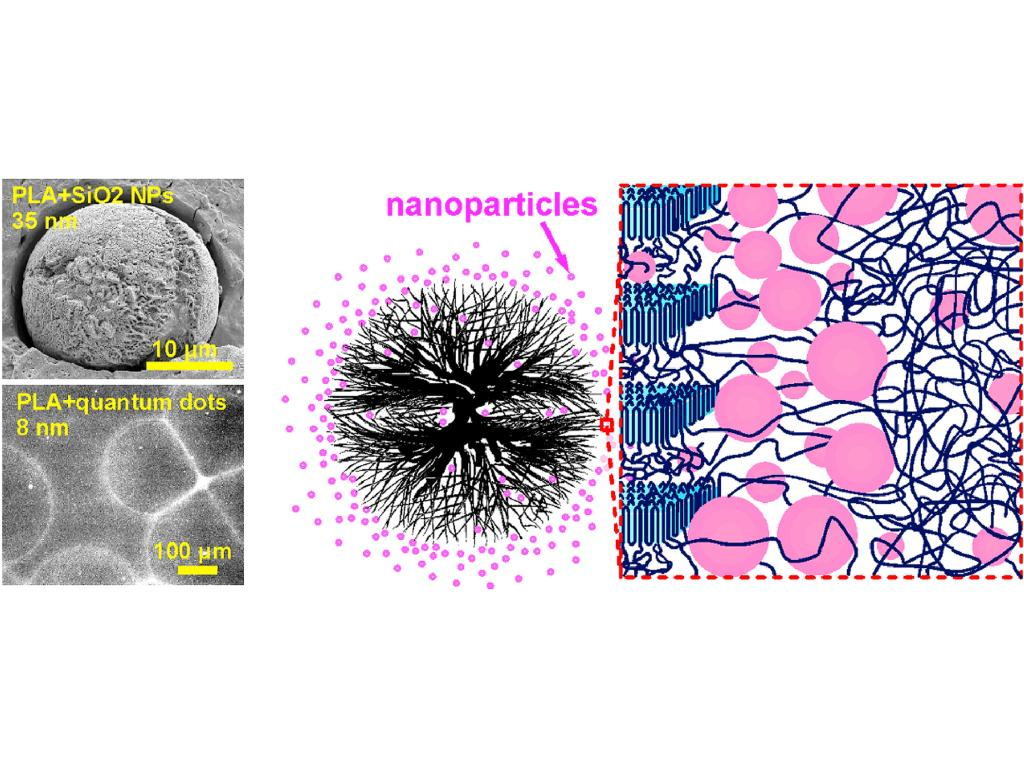The distribution of additives and nanoparticles in a semicrystalline polymer is largely dependent on the complex hierarchical polymer morphology and the kinetics of its development. Here we show by in-situ fluorescence microscopy (FM), coupled with polarized optical and scanning electron microscopy, that a substantial fraction of the additive (Nile Red, NR) and even NR-labelled silica nanoparticles (NP) and quantum dots (QD) was pushed ahead of the growing spherulites during melt-crystallization. For the 35 and 200 nm NPs this was unexpected because their diffusion coefficient based on Stokes-Einstein equation should have been 2–3 orders of magnitude slower than the rate at which spherulites were growing. Another surprising finding was that much of the initially rejected NR and some QDs subsequently re-entered the spherulites through back-diffusion, posing the question why they were then rejected in the first place. The excessive initial rejection of NR and QDs and the unexpectedly rapid migration of NPs are both explained by the additive preferentially filling and being carried along by the polymer depletion zone in the melt ahead of the growing spherulite, and the high negative pressure in these zones. The effectiveness of FM in detecting minute cracks and cavities is also demonstrated. The results also show that the most severe clustering of additives occurs where spherulites did not nucleate, a problem preventable by the addition of nucleating agent.

原文链接:https://doi.org/10.1016/j.polymer.2020.122246